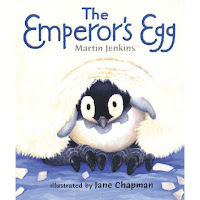In this post I am going to show you two different activities related to
fairy tales. The first one is an adaptation, for pre-schoolers, that I made
with my partners, Raquel y Samanta, of a classic fairy tale: The ugly
duckling.
The first thing we have considered is that English is the second
language that our children will learn. For that reason, we have based ourselves
on the original story and we have made an adaptation according to the
characteristics and capacities of our children (3-6 y/o). To achieve this, we
have shortened the story and we have used an easier vocabulary.
In addition to creating our adaptation, we have had to create a new
ending for this story. To do this, we have taken into account the age of our
receivers. In this way, we invented a finish that we believe suitable for
children from three to six years. I mean, we have invented a simple end, with
an easy vocabulary, which makes sense to our students.
For those people who are interested in reading the original story to be
able to compare the changes, I leave you the
link:
http://www.eastoftheweb.com/short-stories/Collections/ClasFair.shtml.
· Our adaptation of the story:
 It is a beautiful and sunny day. The sun was shining. The pond was beautiful. Behind, a
mother duck is sitting on five eggs. Father duck is nervous waiting for his
ducklings.
It is a beautiful and sunny day. The sun was shining. The pond was beautiful. Behind, a
mother duck is sitting on five eggs. Father duck is nervous waiting for his
ducklings.
"Tchick." One by one all the eggs break open. All except
the biggest one.
Mother duck sits and sits on the big egg. At last it breaks open,
"Tchick, tchick!" The last baby duck was born!!!!!!
But… what has happened? He looks big and strong.
“It is grey and ugly!” The father ducks says, and then he leaves.
The next day mother duck takes her four little yellow ducks to the pond. The ugly duck jumps into the water imitating his brothers, but mother
duck and her ducklings reject him. “Quack, quack! Go away from here, we
don´t love you” Mother duck says.
The poor duckling is so unhappy there. He runs away crying.
He´s looking for a family where he can live. However, he
doesn´t find it.
Finally, he arrives to a river. He sees many beautiful big birds
swimming there. Their feathers are so white, their necks so long, their wings so pretty.
They are beautiful swans!!!
The little duckling wants to be like them but…he is ugly, so he goes
away from there.
One morning the ugly duckling sees the beautiful swans again. He is
afraid, but he wants to swim with them in the river. So, he runs into the
river.
And…. When he looks into the water, he sees a beautiful swan. It is he!
He is no more an ugly duckling. He is a beautiful white swan.
He had finally found his family!
· Our new ending:
By the trail, he´s looking for a family where he can live. However, he
doesn't find it.
Finally, he arrives to a river. Suddenly a duck appears. She looks like
him. She asks him if he wants to be her
friend, because she has no family. They became friends.
The days were passing, and ducklings were growing.
They were still best friends.
One morning, both were a big surprise when they woke up. Its feathers
were not already grey and ugly, now they were white and beautiful.
Oh dear! They are swans! How happy were the two ducklings!
After a while, they fall in love and form a beautiful swans’ family.
Heretofore this post. I hope you liked it and I invite you to create your
own adaptations of classic tales.
Have a nice day!



























